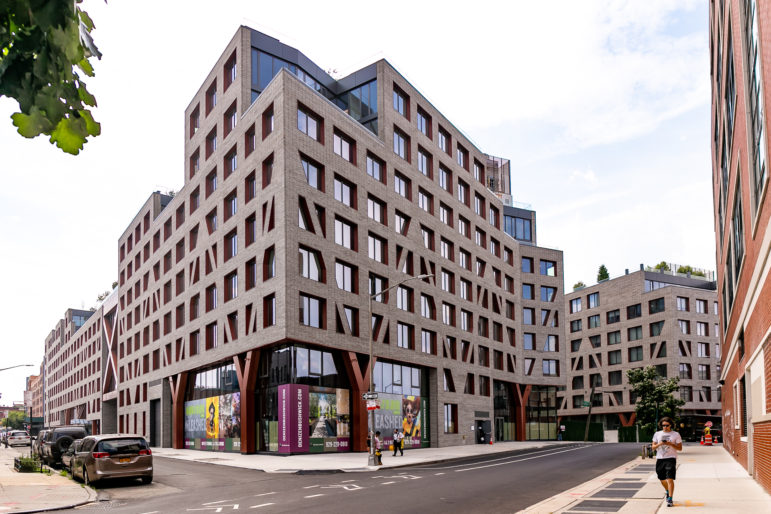“We’re long past the point where we can squabble over one solution versus another. We have so many tools at our disposal—far too many of them sitting around gathering dust. It’s time we treat the housing problem like the crisis it is.”

Adi Talwar
Apartments in Bushwick, Brooklyn.The drumbeat of news stories, editorials and opinion pieces in recent weeks about the housing crisis we are in the midst of has been encouraging. Establishing consensus that there is a problem is an important step toward addressing it. But that the crisis exists is where that consensus ends, for now. Dig deeper, and you will find heated debates over which of the many solutions that have been offered is the right one—and that’s another problem.
There are well-intentioned individuals advocating for a wide range of smart solutions to the housing problem: investments in existing public housing, private development, new social housing, expanded rental and down payment assistance programs, and stronger protections for those who already are housed. But in discussions about the housing problem, it is common to find one or both sides dismissing the particular solution for which the other is advocating.
The fact is that when it comes to addressing and solving the housing crisis, we must take an all-of-the-above approach.
That means not only incorporating those ideas into a comprehensive plan, but also ensuring that the public, private and non-profit sectors are all part of its implementation. And it means fixing the broken processes that helped get us here, including updating antiquated decision-making processes and zoning regulations that have stifled progress.
An all-of-the-above approach sounds ambitious. However, New York has fallen so far behind in terms of housing availability and affordability that incremental solutions not only will fail to meet the current need but will set us back further due to our continued growth.
Today, we need about a quarter of a million homes just to close our current shortfall. By 2030, we’ll need half a million. Yet right now, there are fewer than 80,000 homes in the development pipeline. And while expanding our housing inventory is just one aspect of the overall challenge, that shortage also puts upward pressure on rents and home prices, which we’re also not doing enough to solve.
This is why it is so discouraging to see people channeling their energy into fighting or protesting individual solutions as if it’s a binary choice.
Yes, we need to remove roadblocks that make it difficult for developers to build.
Yes, we need to invest in social housing.
Yes, we need to bring our public housing into the 21st century.
Yes, we need to expand opportunities to own.
Yes, we need to leverage non-profit developers and community land trusts.
Yes, we need to adjust our zoning and planning regulations to encourage more missing middle housing.
And yes, we need to do much, much more than all that.
To be clear, there are many reasonable voices who have long been saying “yes” to all of the above. But too often, they are drowned out by rhetoric that comes not from lived experience but some theoretical notion of what’s right.
That needs to end. We’re long past the point where we can squabble over one solution versus another. We have so many tools at our disposal—far too many of them sitting around gathering dust. It’s time we treat the housing problem like the crisis it is. That means an all-of-the-above approach.
Valerie White is senior executive director of LISC NY, a community development non-profit focused on closing the racial wealth gap.









3 thoughts on “Opinion: An All-of-the-Above to Fix NYC’s Housing Crisis”
Been approved for voucher and apartment
T. HRA will not cut checks to landlord. What to do?
I reached out to director of HRA, politicians Albany,
No answers. Who pays my landlord so I can move in.
No. NYC with a population of 8.6 million is at the end of what it’s 100+ year old infrastructure can handle.